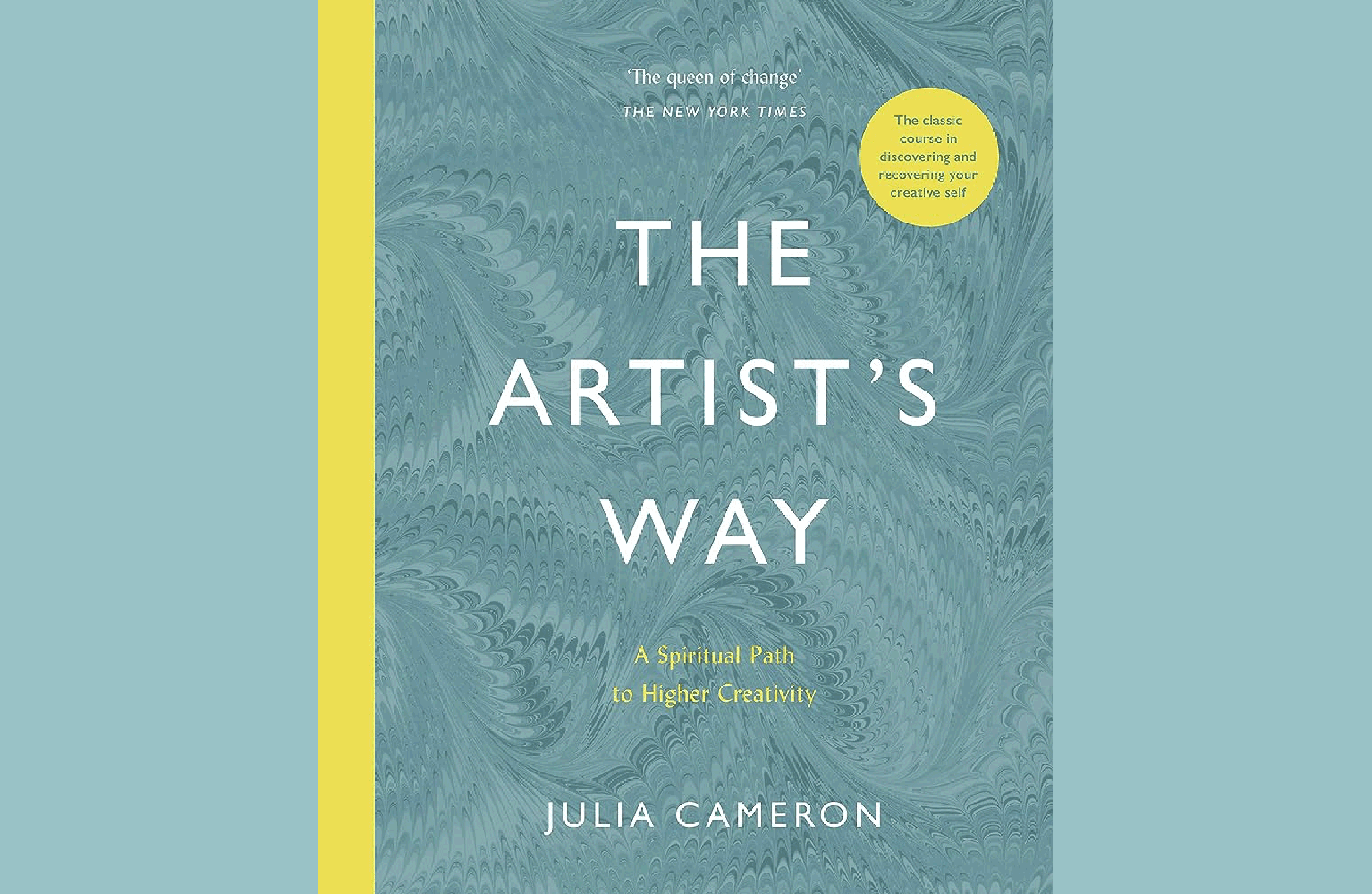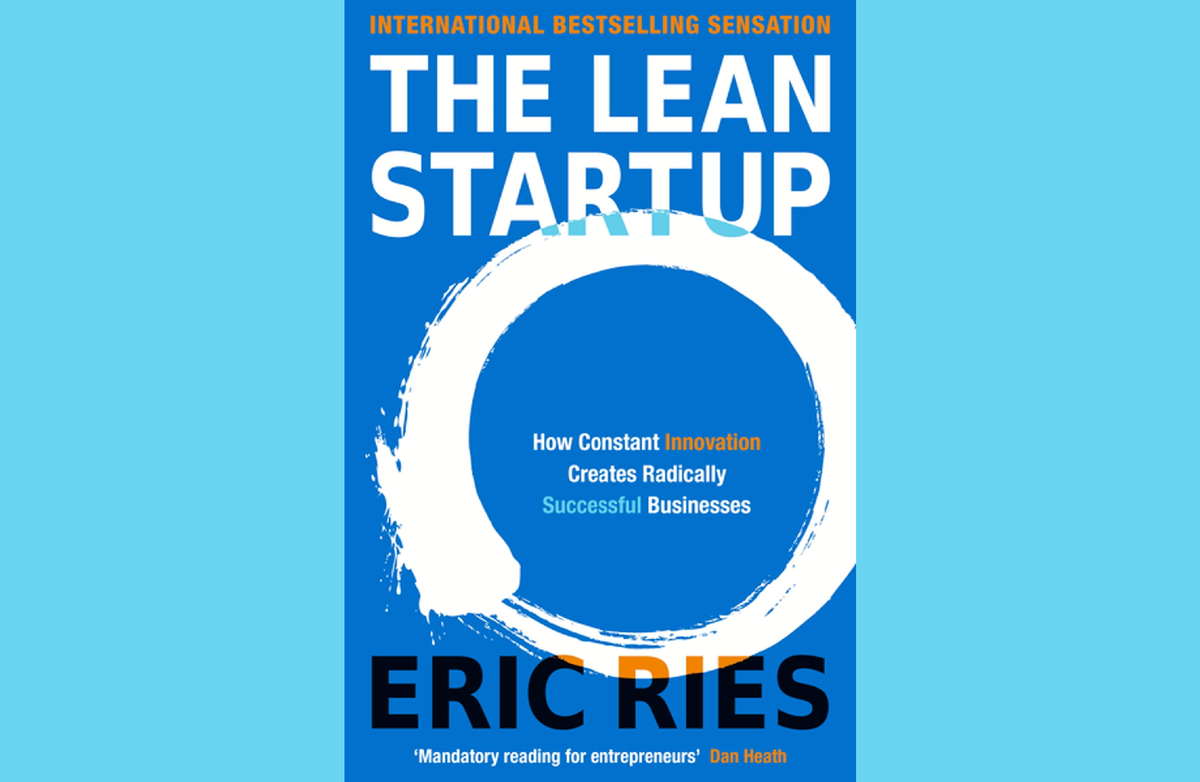How To Find An Eye-opening Way To Solve A Problem
Discover how the “Call to Adventure” applies to founders and CEOs, with personal insights and lessons from Howard Schultz’s Starbucks journey. Featuring tools like “The Artist’s Way” and “The Lean Startup.”

Every founder’s journey begins with a moment—a call to adventure. It’s the instant when you see a problem, feel the desire for change, and realize you’re the one who needs to solve it. This step is both exhilarating and intimidating. As someone who has founded several companies, I’ve experienced this phase in different forms, each time teaching me valuable lessons about vision, resilience, and the importance of proper support.
Let me use the lessons I’ve learned to explain this stage of the entrepreneurial journey.
Recognition of a Problem or Opportunity
The "call" begins when you recognize a market gap or a pressing need. For me, this has often felt like a sudden flash of clarity—an understanding that something is missing and that I might be the one to fill that void. This happened when we launched NuDance, Australia’s first internet radio station, in 1997. Back then, it was clear that the Internet would transform industries, but few had ventured into online broadcasting. We saw the potential to revolutionize how people consumed music, but at that moment, the opportunity also brought with it a lot of unknowns. The key for founders at this stage is to seize the opportunity, even if the road ahead isn’t entirely clear. Recognizing a problem is the first step, but believing you can solve it moves you from concept to action.
“The world doesn’t just change on its own—it changes because someone steps forward to solve a problem no one else has dared to.”
Internal Conflict and Desire for Change
Often, the drive to become a founder is rooted in dissatisfaction with the status quo. I’ve felt this in nearly every venture I’ve started. There’s always been this gnawing feeling that things should be different—whether it’s how people engage with technology or how industries operate. This inner tension fuels the founders’ decision to leave the ordinary world behind and pursue something more significant. When starting, I often questioned whether I was ready to take on such a huge responsibility. But what I’ve learned is that discontent with the status quo is the spark that ignites innovation. The desire to change the world—or at least your corner—will always outweigh the fear of entering the unknown.
“Every entrepreneur starts with a question: Why isn’t this better? The difference is they dare to pursue an answer.”
Fear and Uncertainty
Every entrepreneur knows this stage well. The moment you decide to embark on your venture, fear comes knocking. When I launched my first few startups, the fear of failure loomed. There’s much to lose—your reputation, financial stability, even personal relationships. NuDance felt like a huge gamble, and I spent many sleepless nights worried about what could go wrong. But I’ve learned that the fear never truly goes away. The key is not to let it paralyze you. Founders who succeed learn how to manage this fear and use it to fuel their efforts. You have to accept that uncertainty is part of the journey. What matters is how you navigate through it. Every challenge you face will make you more resilient.
“Fear is always there, but so is opportunity. The question is: which one will you focus on?”
Vision and Purpose
This is the guiding star for any founder. Early on, I was too focused on risks and failures. What I should have been doing was focusing more on the vision—the big picture of what we were building and how it could impact the world. As a founder, you need to create a compelling vision that drives you and inspires those around you. For example, at LaunchPodium, our vision wasn’t just about building a platform for entrepreneurs but empowering entrepreneurs to take control of their marketing and amplify their stories. A strong vision gives you the courage to keep moving forward, even when the road ahead is uncertain.
“Vision is the engine that powers resilience. Without it, you’re just surviving the storms—when you could be steering through them.”
5. Support Systems
One of the biggest lessons I’ve learned is that no founder succeeds alone. When building LaunchPodium, I was fortunate to have coaches like Nick Raushenbush and Radu Cautis. They weren’t just advisors; they held me accountable. Nick and Radu asked tough questions, pushing me to think deeper about our strategy and execution. Their guidance helped me scale and, ultimately, sell the company. Support systems are critical—mentors, coaches, or peers. They provide insight and perspective and, most importantly, hold you to your goals. Without them, getting lost in the day-to-day chaos of running a business is too easy. Surround yourself with people who will cheer you on and challenge you to be better.
“True growth happens when someone cares enough to hold you accountable to the vision you promised yourself.”

Case Study: Howard Schultz and Starbucks
Howard Schultz’s story with Starbucks perfectly embodies the Call to Adventure for a founder. It’s a tale of creativity, vision, perseverance, and a constant drive to iterate and improve. Schultz didn’t just see coffee as a commodity—he saw it as an experience that could be transformative for communities and customers. His journey reflects the lessons in "The Artist’s Way" and "The Lean Startup.”
Recognizing the Opportunity
In the early 1980s, Howard Schultz was the marketing director for a small coffee bean company, Starbucks, when he had a life-changing experience during a trip to Milan, Italy. He saw firsthand how Italian cafés were more than just places to drink coffee—they were central to the community, where people gathered to share stories and enjoy life. He returned to the U.S. to create a similar culture around coffee in America.
This was Schultz’s Call to Adventure. He didn’t just see a gap in the market; he envisioned something bigger—a space where coffee wasn’t just a drink but a community experience. This deep, creative insight aligns perfectly with what "The Artist’s Way" teaches about unlocking creativity and seeing beyond the obvious.
The Internal Struggle
Schultz’s vision wasn’t immediately embraced. The founders of Starbucks didn’t share his passion for turning their coffee business into an espresso bar experience, and Schultz initially faced rejection when he proposed his idea to transform the brand. This is where The Artist’s Way comes into play—Schultz had to tap into his inner creativity and clarity, pushing through resistance and believing in his vision, even when others didn’t see it.
In the face of rejection, Schultz could have easily walked away, but instead, he did what every great founder does—he doubled down on his conviction. He left Starbucks and started his coffee chain, Il Giornale, to bring his Italian-inspired coffee bar concept to life. He used this phrase as a testing ground for his ideas. Eventually, when Starbucks’ original owners decided to sell the company, Schultz jumped at the opportunity, raising $3.8 million from investors to purchase Starbucks in 1987.
Fear and Uncertainty
Even after purchasing Starbucks, Schultz faced an uphill battle. The American coffee market in the late 1980s vastly differed from today’s. Most consumers were accustomed to instant coffee; few understood or valued espresso drinks. Schultz had to embrace the fear of the unknown, pushing forward despite uncertainty. He knew a cultural shift needed to happen, and creativity was vital to achieving it.
Schultz’s persistence mirrors the Morning Pages technique from "The Artist’s Way"—constantly reflecting, refining his vision, and finding new ways to overcome obstacles. He was also open to evolving his ideas, recognizing that transforming Starbucks into his envisioned community hub would take time and patience.
Building and Iterating with Purpose
Here’s where "The Lean Startup" methodology shines in Schultz’s journey. He didn’t build Starbucks into the global brand it is today overnight. Instead, Schultz used a form of the build, measure, learn loop to perfect the Starbucks experience. Initially, the company tested different layouts, product offerings, and customer service approaches. Early stores didn’t always have seating areas, and the menu wasn’t as diverse as today. Schultz and his team constantly measured customer feedback and iterated the Starbucks experience to match what people wanted.
The Starbucks we know today—cozy seating areas, a wide range of coffee and food options, and a warm, community-centric atmosphere—results from countless iterations. Schultz tested his assumptions every step of the way. When something didn’t work, they pivoted. For instance, in the 1990s, Starbucks introduced a line of flavored syrups after noticing that customers added sugar to their drinks to enhance the flavor. This iterative approach reflects "The Lean Startup." principle of constantly learning from the market and refining the product to achieve product-market fit.
Vision and Creativity Drive Success
Schultz was able to grow Starbucks into a global brand successfully because he never lost sight of his core vision. Like a founder practicing The Artist’s Way, Schultz was deeply connected to his creative purpose. He understood that Starbucks wasn’t just about coffee but about creating a unique experience. Schultz ensured that every aspect of the business aligned with his original vision of creating a "third place" between home and work where people could relax, connect, and enjoy quality coffee. This vision set Starbucks apart from competitors and allowed it to grow exponentially.
At the same time, Schultz applied "The Lean Startup" principles to ensure that his vision could be executed in a scalable way. He understood that vision alone wasn’t enough—he needed to adapt and iterate based on real-world feedback continuously. This balance of creative clarity and pragmatic iteration was key to Starbucks' success.
Support Systems
One of Schultz’s strengths as a leader was recognizing the importance of building a solid support system. He surrounded himself with a talented team that helped bring his vision to life. Whether it was skilled baristas who provided excellent customer service or seasoned executives who helped scale the business, Schultz knew that Starbucks could only succeed if it had the right people supporting the mission. His journey reflects the critical importance of mentorship and support we’ve discussed and how founders can’t succeed in isolation.
Facing the Unknown and Expanding Globally,
Schultz’s bold decision to expand Starbucks beyond the U.S. into international markets was another example of facing the unknown. Global expansion is a daunting challenge for any business, and Schultz approached it with the same experimental mindset that had served him well so far. The company carefully studied international markets, adapted to local tastes, and rolled out stores in critical locations, continuing the build, measure, and learn loop to ensure success in different regions.
Through constant experimentation and adaptation, Schultz turned Starbucks into a global empire with over 30,000 stores worldwide, all while staying true to his original vision of creating a community-focused coffee experience.
How Schultz Embodied the Lessons of These Two Books
Howard Schultz’s story reflects the lessons of both "The Artist’s Way" and "The Lean Startup":
- From "The Artist’s Way": Schultz’s creative vision to redefine the coffee experience, his ability to push through internal and external resistance, and his relentless focus on the bigger picture illustrate the importance of vision and creativity. Schultz didn’t just open coffee shops—he created a culture. His ability to tap into his inner creativity helped him see opportunities others missed.
- From "The Lean Startup," Schultz applied the principles of build, measure, and learn throughout Starbucks’ growth, from iterating on store layouts and menus to testing new products and expanding globally. He understood the importance of experimenting, learning, and pivoting when necessary, which allowed Starbucks to remain agile and responsive to market changes.
Schultz’s ability to combine vision with disciplined execution is why Starbucks became a household name and why he remains one of the most respected founders in the business world today.
Recommended Reading for Founders

"The Artist’s Way" by Julia Cameron
At first glance, Julia Cameron’s "The Artist’s Way" might not seem like a traditional business book. It’s a guide for unlocking creativity through writing and self-reflection, primarily aimed at artists and writers. But over the years, I’ve realized that this book also offers invaluable insights for entrepreneurs and founders. Running a business, especially in its early stages, requires abundant creativity. Whether you’re solving a complex problem, navigating uncharted markets, or figuring out how to outmaneuver competitors, thinking outside the box is critical. Creativity isn’t just for product designers or marketing teams—it’s also essential for the CEO and founder.
Cameron’s book teaches us the power of writing and journaling to enhance creative thinking. One of the core practices in the book is called "Morning Pages,” where you write three pages of stream-of-consciousness writing first thing in the morning. These pages aren’t meant to be read or analyzed; they are a space to clear your mind and allow new ideas to surface.As a founder, I’ve found that writing every morning can help me process complex challenges, develop creative solutions, and clarify my vision. Engaging in free-flow journaling allows me to step outside the day-to-day grind and connect with deeper insights about my business. Often, I’ve found myself solving problems I didn’t even realize were problems simply because journaling gave me the space to think more deeply.
Additionally, Cameron emphasizes the importance of overcoming creative blocks and dealing with inner doubts—issues every entrepreneur encounters at some point. Just as artists experience creative blocks, founders face moments of self-doubt, fear of failure, or periods of stagnation. "The Artist’s Way" provides exercises and strategies to break through those mental barriers and tap into your full creative potential, which is crucial for any entrepreneur trying to innovate and lead in a competitive environment.
How to Apply It as a Founder:
- Start journaling daily: Implement the practice of writing "Morning Pages" to help clear mental clutter and spark new ideas.
- Use writing to solve problems: When faced with tough decisions or strategic challenges, try writing through the problem. You’ll be surprised at how often the solution presents itself through reflection.
- Address internal blocks: Recognize when self-doubt or fear is holding you back, and use Cameron’s exercises to push through and reignite your creative energy.

"The Lean Startup" by Eric Ries
Eric Ries’ "The Lean Startup" is a modern classic in the entrepreneurial world, and for good reason. It introduces a groundbreaking methodology that has changed how startups think about growth and development. In the past, many startups would spend years developing a product before launching it to the market, only to discover that customers didn’t want or need it. Ries flipped this model by promoting the build, measure, learn loop. In this system, founders create a Minimum Viable Product (MVP) and quickly test it with real customers, gathering feedback and iterating as they go.
The central idea behind "The Lean Startup" is that learning fast and adapting is the key to success in today’s fast-paced market. Rather than investing massive amounts of time and resources into perfecting a product, founders should launch a simple version as quickly as possible, gather data on how it performs, and then iterate based on customer feedback. This reduces the risk of building something nobody wants and ensures that your product evolves based on real-world insights, not just assumptions.
For founders and CEOs, agility and adaptability are critical. Ries’ approach encourages startups to stay nimble, continuously testing their assumptions and adjusting their strategies in response to market feedback. When I was scaling LaunchPodium, we used this exact methodology to guide our product development. Instead of spending months (or years) perfecting a platform we thought entrepreneurs would need, we launched an MVP and quickly iterated based on feedback from our users. This allowed us to make data-driven decisions and evolve the product in ways that met the real needs of our customer base.
The Lean Startup also emphasizes the importance of pivoting when necessary. After testing your MVP, you may realize that the market wants to discover something different from what you initially envisioned. Rather than stubbornly sticking to your original plan, Ries advocates for being open to pivoting in a new direction based on what you’ve learned. This flexibility is crucial for survival, especially in the early stages of a startup when resources are limited and time is of the essence.
How to Apply It as a Founder:
- Launch early and learn fast: Don’t wait until your product is perfect. Launch an MVP and gather honest customer feedback to guide your next steps.
- Iterate constantly: Use the build, measure, learn loop to refine your product based on data. Every iteration gets you closer to product-market fit.
- Be ready to pivot: If the data shows that your original idea isn’t resonating with customers, be willing to adjust your strategy, even if it means shifting in a completely new direction.
How These Books Shape the Entrepreneurial Journey
These two books are so complementary because they address both sides of entrepreneurship—the internal and the external. "The Artist’s Way" helps founders develop their inner creativity and clarity, providing the tools to unlock deeper insights and overcome personal blocks. This inner work is crucial because a solid internal foundation allows you to lead purposefully, make better decisions, and stay resilient in facing challenges. On the other hand, "The Lean Startup" equips founders with a practical, external framework for testing ideas, gathering feedback, and iterating efficiently. It’s about putting your ideas into action in the real world and staying agile in a fast-changing market.
As a founder, you need both:
- The creative clarity that comes from self-reflection and journaling helps you think beyond immediate challenges and craft a compelling vision.
- The pragmatic approach of experimenting, measuring, and learning ensures that your vision aligns with market needs and evolves through real-world testing.
"The Artist’s Way" sharpens your mind and creativity, while "The Lean Startup" keeps you grounded in action and iteration. Together, they form a powerful toolkit for any entrepreneur navigating the complexities of building a business.
Turn Problems into Opportunities with Bold Action
As you seek solutions to the challenges that lie before you, remember that the most eye-opening discoveries come from a willingness to explore new perspectives and embrace bold action. Like every founder faces their “call to adventure,” your journey starts with recognizing the problem—and believing you are the one to solve it.
Now is your time to leap. Apply the insights you’ve gained and find your unique way to overcome obstacles. Please don’t wait for the perfect moment; create it. The world needs problem-solvers like you—innovators who see opportunity where others see roadblocks.
So, ask yourself: What’s stopping you from solving the problem today? The next step is yours to take. Start now and pave your way to a breakthrough solution that could change everything.
Let’s make it happen!




